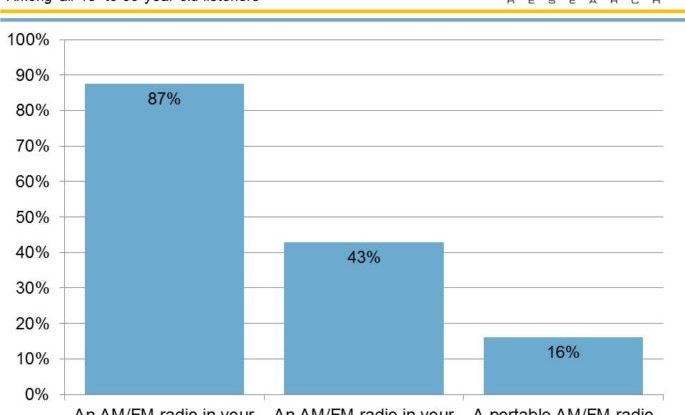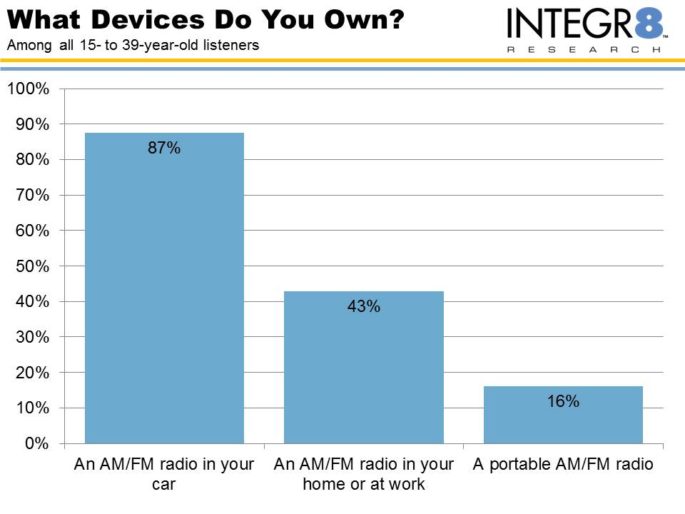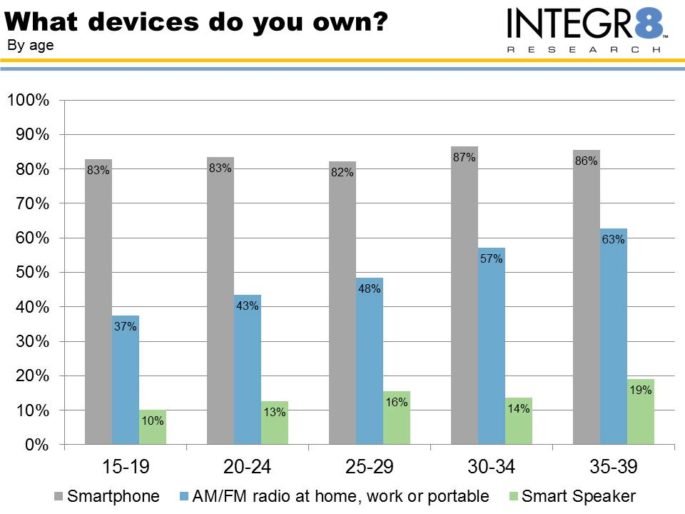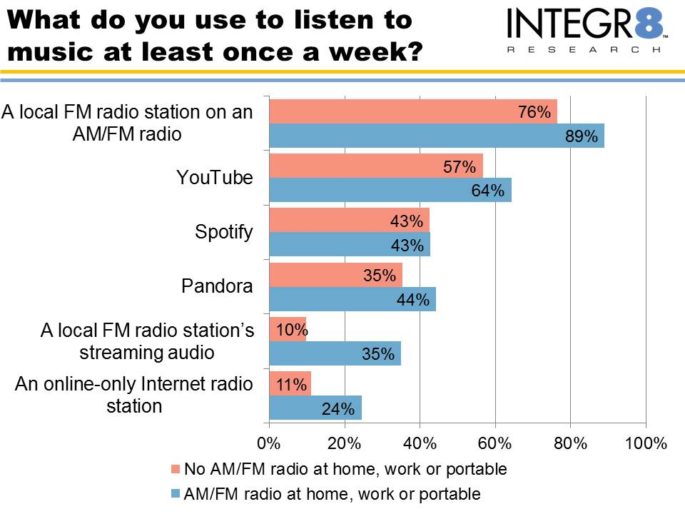
In a new blog post, INTEGR8’s MATT BAILEY writes as clock radios, stereos, and Walkmans disappear, The AMAZON ECHO and GOOGLE HOME have given new hope to programmers for bringing local radio back into listeners’ homes. While screen-driven smartphones and tablets have proven well-suited to the endless exploration SPOTIFY and YOUTUBE enable, smart speakers seem perfectly suited to radio:
“Because they’re powered by voice-commands, listeners have to know what they want to hear and how to ask for it. In theory, that gives strong local radio brands a head start. There isn’t a screen filled with endless competing choices. Since they’re designed to play in the background while users do other things, smart speakers also seemingly pair perfectly with radio’s hands-off, hassle free approach to providing listeners a music soundtrack.
“Are the bets we’re placing on ALEXA and her friends actually supported by what people are doing? Furthermore, how are these new technologies and listening options changing listeners’ relationships with their local radio stations, especially in introducing listeners to new music?”
To explore this topic, INTEGR8 conducted 3,140 online interviews with 15 to 39-year-olds who are partisans to a local Top 40, Top 40/Rhythmic, Urban, Alternative, or Country station. It’s not a representative sample of all Americans, but it is a solid snapshot of the radio listeners most relevant to new music radio stations. We then asked them about what devices they own, what services they use to hear music, and where they hear new music first.
Before tackling the question of whether or not smart speaker owners are using them as modern-day radios, INTEGR8 quantified the problem of people no longer owning traditional radios outside of their cars.Tabletop RadioHere are three reasons why the problem is worse than you thought:
1. AM/FM radios really are vanishing. While traditional AM/FM radios remain ubiquitous in almost every vehicle, several studies have noted that traditional radios are no longer stock items in the homes of many younger consumers. How bad is it? The vast majority (87%) of the 15 to 39-year-olds INTEGR8 interviewed own a car with an AM/FM radio. However, only 43% have a traditional radio at home or at work and a scant 16% own a portable radio. Together, only 48% still own a radio other than in their car.

2. People who don’t own radios are less likely to stream local stations. Many broadcasters assumed that as traditional radios disappeared, listeners would simply use their smartphones as 21st century transistor radios, whether through a station’s own app or aggregators such as TuneIn and iHeartRadio.
“Unfortunately, that’s not happening. The good news is that listening to a local FM station on a traditional radio remains the most common way listeners consume music, whether they still have a radio at home or not. YOUTUBE, SPOTIFY, and PANDORA remain competitive but subordinate choices among these listeners.
“The bad news is that while 35% of those listeners who still own an AM/FM radio outside of their car also listen to a local FM radio station’s streaming audio, a scant 10% of listeners who don’t own a radio beyond their car regularly stream a local FM station. Listeners who don’t have radios outside of their cars are also less likely to stream online-only internet radio than people who still own regular radios.
“When radios aren’t present in people’s homes and workplaces, people are less engaged with radio-style programming on all platforms. Spotify is the only listening option that is as popular among people who don’t own radios outside of their car as it is among people who do.”

3) People who don’t own radios are also less likely to own smart speakers. That’s because the youngest listeners are least likely to own any of these devices. Among listeners in their late 30s, 63% still have a radio outside of a car, while 19% own a smart speaker. Among 15- to 19-year-old teens, however, only 37% still have a radio outside of a car. Only 10% of these same teens own a smart speaker.
There is only one smart device that listeners from their teens to their 30s are all highly likely to own — a smartphone. People don’t get excited about smartphones now that everyone owns one. For radio programmers seeking to reach listeners on the hardware they are most likely to own, however, the smartphone remains the one device most people have and have with them most of the time.

Summing up, INTEGR8 notes smart speakers are still mostly owned by early adapters, but that’s changing quickly. One firm is already predicting 75% of American households will have one by 2020. What can radio expect when more homes actually own smart speakers? Do people indeed ask Alexa to play their favorite local radio station?
This Article Was Originally Posted at www.allaccess.com
https://www.allaccess.com/net-news/archive/story/170174/integr8-alexa-and-the-vanishing-am-fm-radio